Install the app
How to install the app on iOS
Follow along with the video below to see how to install our site as a web app on your home screen.
Note: This feature may not be available in some browsers.
You are using an out of date browser. It may not display this or other websites correctly.
You should upgrade or use an alternative browser.
You should upgrade or use an alternative browser.
Japan
- Thread starter connyxy
- Start date
Railshuttle
Member
Very impressive work there pagroov, That 4 track junction must've been a nightmare to wire up.
Sanek17: The Kiha 58? I think Hiroshi made a good one, IT should still be on the DLS.
Sanek17: The Kiha 58? I think Hiroshi made a good one, IT should still be on the DLS.
duskeyduskey
電車
Hello! I'd like to share some of my objects I made into one pack. Hope this helps!
Some may not be included so please check my website.
Object pack download: https://drive.google.com/file/d/1fChsaIR_TmrhfUwUd_4-NrQaZme7DAvk/view
Pack Info:
File size: 13.5mb
37 assets
Mostly low poly (for performance)
Includes splines, objects, and trackside.
If there are any problems please tell me.

Some may not be included so please check my website.
Object pack download: https://drive.google.com/file/d/1fChsaIR_TmrhfUwUd_4-NrQaZme7DAvk/view
Pack Info:
File size: 13.5mb
37 assets
Mostly low poly (for performance)
Includes splines, objects, and trackside.
If there are any problems please tell me.

Hello! I'd like to share some of my objects I made into one pack. Hope this helps!
Some may not be included so please check my website.
Object pack download: https://drive.google.com/file/d/1fChsaIR_TmrhfUwUd_4-NrQaZme7DAvk/view
Pack Info:
File size: 13.5mb
37 assets
Mostly low poly (for performance)
Includes splines, objects, and trackside.
If there are any problems please tell me.
Very nice objects. I want really to use them. Especially the vending machines and ticket gates but sadly I can't :'( because I vowed that my route is Download Station Compatible. So unless you want to share the pack there then I can use them.
The DLS with all the unknowns is bad already so I don't want to add another list of objects that users have to hunt for.
It is the same reason I can't use anything from the KHB pack I bought. if I did building would go much faster but those items are also not on the DLS.
So what I have to do is finish my route 100% (probably gonna take another year 1 or 2 depending on circumstances, time and energy) and then make an enhanced version with all the nice content.
Alternative is that I make some Vending machines myself. in Sketchup like I did with some custom buildings.
duskeyduskey
電車
Very nice objects. I want really to use them. Especially the vending machines and ticket gates but sadly I can't :'( because I vowed that my route is Download Station Compatible. So unless you want to share the pack there then I can use them.
The DLS with all the unknowns is bad already so I don't want to add another list of objects that users have to hunt for.
It is the same reason I can't use anything from the KHB pack I bought. if I did building would go much faster but those items are also not on the DLS.
So what I have to do is finish my route 100% (probably gonna take another year 1 or 2 depending on circumstances, time and energy) and then make an enhanced version with all the nice content.
Alternative is that I make some Vending machines myself. in Sketchup like I did with some custom buildings.
Yes, I am planning to upload them to the dls. I was just too lazy to upload them since ive never done so. Also, feel free to request any objects, ill try to make them and upload them to the dls.
Speaking of new content, Ive released my first train. JR shikoku 1500 Series! Made in collaboration with @AlexMaria/Socimi!
You can get it here on my website:
https://sites.google.com/view/duskeyduskey-trainz/rolling-stock/

griffinjim
Trainz "Veteran"
Great start! Bit low poly, but I'm not complaining. I see some serious potential here.
duskeyduskey
電車
Great start! Bit low poly, but I'm not complaining. I see some serious potential here.
Thanks, yes I made it low poly for the people who dont have a good pc, also socimi will be making HD version of it.
Railshuttle
Member
I've reached the halfway point of rehabbing the Blue line on my route. I've redid the Tojiyuma station so the container traffic can pass though without clogging the platforms up. I've begun construction of the West Coast bullet train, Yamashiro gets a local line and a DMU. and there is also a new short line next to the Blue line which I haven't named yet. Enjoy the pics.
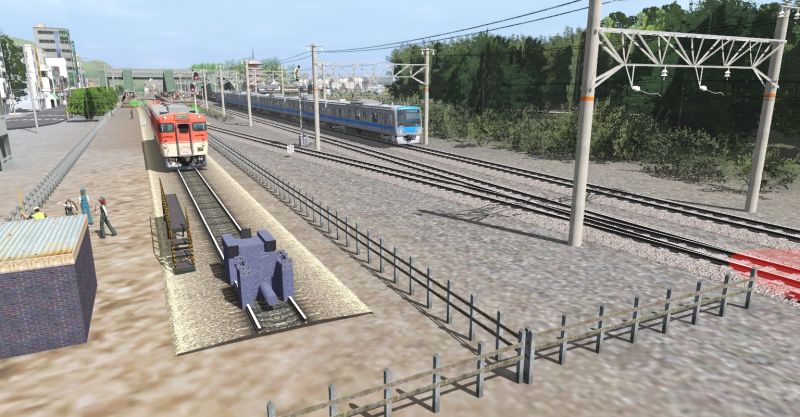
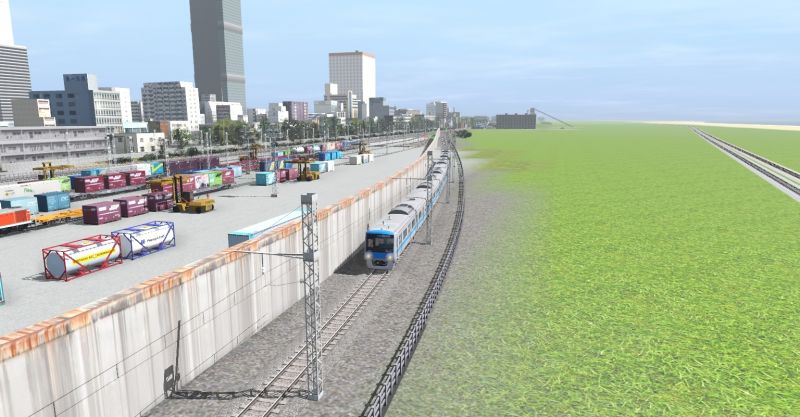
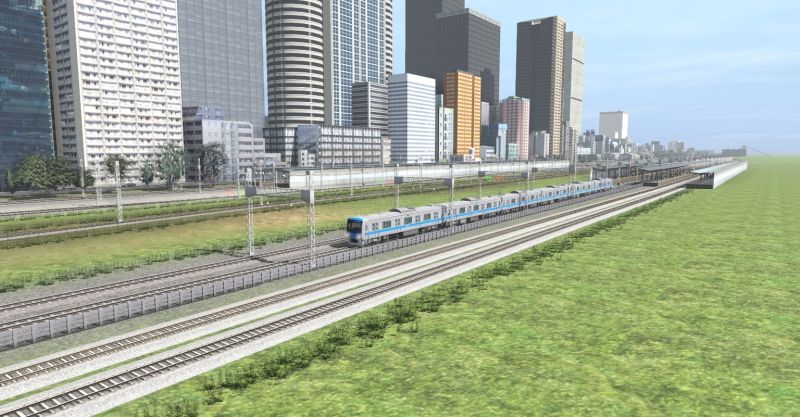
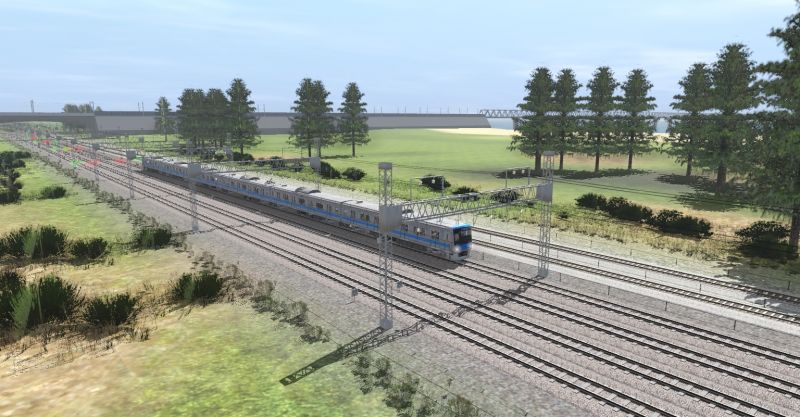
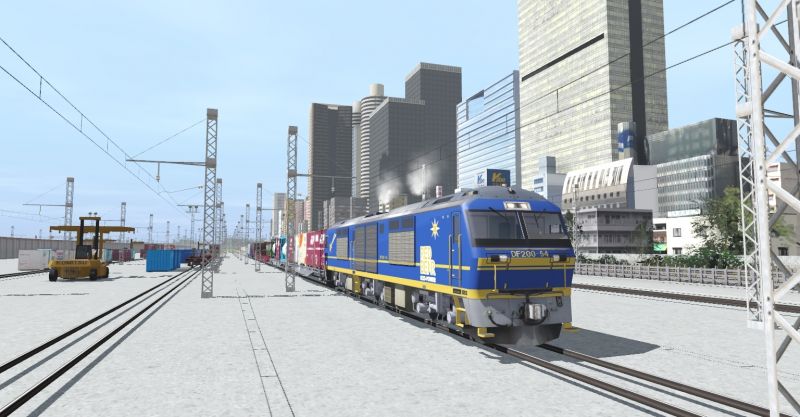
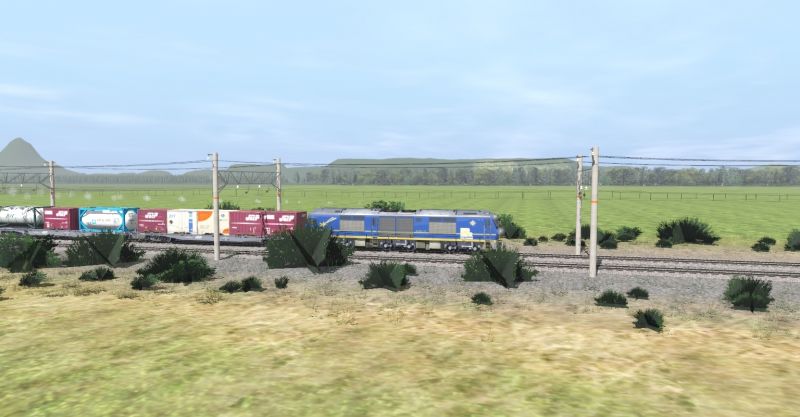






I've reached the halfway point of rehabbing the Blue line on my route. I've redid the Tojiyuma station so the container traffic can pass though without clogging the platforms up. I've begun construction of the West Coast bullet train, Yamashiro gets a local line and a DMU. and there is also a new short line next to the Blue line which I haven't named yet. Enjoy the pics.
Great pics and progress
duskeyduskey
電車
Nara Line 103 Series

223-0 Series Fictional route


223-0 Series Fictional route

duskeyduskey
電車
Posted 2 videos I made a while ago...
duskeyduskey
電車
[continuing from previous post]
Chuckwagon2010
Member
question, IS THAT E353 UP FOR FREEWARE BECAUSE THAT LOOKS AMAZING!
duskeyduskey
電車
question, IS THAT E353 UP FOR FREEWARE BECAUSE THAT LOOKS AMAZING!
Unfortunately its private content, you can ask rizky if he still has it.
@ Duskeyduskey. Great pics and videos you made there. I love those railway shorties. Reminds me I also have to make them more. But just too busy with building.
Oh and yeah if possible can you upload some of your package contents to DLS like the ticket gates and the vending machines (especially the vending machines).
Oh and yeah if possible can you upload some of your package contents to DLS like the ticket gates and the vending machines (especially the vending machines).
Chuckwagon2010
Member
I would but that would make me a giant gimme pig
duskeyduskey
電車
Thanks, I tried uploading them but they all ended up being faulty. Ill try again later.@ Duskeyduskey. Great pics and videos you made there. I love those railway shorties. Reminds me I also have to make them more. But just too busy with building.
Oh and yeah if possible can you upload some of your package contents to DLS like the ticket gates and the vending machines (especially the vending machines).
I would but that would make me a giant gimme pig
check pm
Thanks, I tried uploading them but they all ended up being faulty. Ill try again later.
check pm
Must be the Auran error checking
About the train. E353. It looks nice. I drool too but I can wait and there is a free AG Trainz version also.
Last edited:
After a little break, i'm back with more rolling stock - this time my first Toei Subway train, the Mita Line 6300 Series!

From left to right: 1st batch (built 1993), 2nd batch (built 1994) and the 3rd batch (built 1999-2000) of the 6300 Series.
Now avaliable on my website!
The 6300 Series was introduced in the early 1990s both to replace the ageing and obsolete 6000 Series and also in preparation for the opening of the long-awaited Mita Line extension from Mita to Meguro, where it would've connected with the Tokyu Meguro Line.
The 6000 Series, the original Mita Line trains were modern when they were introduced in 1968 with the line's opening, and had whitstood their intense service years quite well, meaning that they were still in a relatively good condition, but by the 1990s their design had become quite obsolete. However, the key factor that spelled the end for the 6000 Series was the extension to Meguro, wich was to be built jointly with the TRTA Namboku Line, wich opened in 1991 using state-of-the-art technology such as platform screen doors and automatic train operation - the new section was to be built to Namboku Line standards and as such to travel on it the 6000 Series trains would've needed to be fitted with all the necessary signalling and ATO equipment, let alone fine-tuning them to match the performance of the radically different TRTA 9000 Series, something that is already difficult and expensive on modern trains, let alone on the 1960s-era 6000 Series.
Hence, since it made no economic sense to adapt the nearly life-expired 6000 Series, Toei proceeded to order up-to-date trains for the Mita Line.
Designated as the 6300 Series, the new Mita Line trains were designed and built by Kawasaki Heavy Industries, using a manufacturing tecnique and stainless steel bodyshell design that the company was perfecting for JR East's upcoming 209 Series. According to Toei, the rounded front FRP mask, incorporating the mandatory emergency exit for subway trains, was designed to convey a sense of speed, "high-tech" and "near-future".
Equipment-wise, the 6300 Series was of course intended to be as close to the TRTA 9000 Series as possible, sharing the same traction equipment (a GTO-VVVF inverter made by Hitachi), signalling and ATO systems, driving desks and some interior design cues - the interior itself was based on the Asakusa Line 5300 Series, then Toei's newest train.
Finally, the livery was mostly painted in the Mita Line's strong blue, but with a red accent to simbolize "Toei's passion" and the pleasant "gingko leaf" green logos of the Tokyo Metropolitan Government, applied on the front and between the cab and the first passenger door.
The first five completed 6300 Series trains, formed as 6-car sets, were delivered to Shimura depot in May 1993, entering regular revenue services (after a couple of demonstration runs) on the 23rd of June. These were followed by a second batch of eight 6-car sets delivered in 1994, with the last one entering in service by July of that year. These second batch trains differed very little from the 1st batch one, with the few notable differences being a different front skirt desing and the addition of a "horn"-style radiotelephone antenna besides the distinctive inductive loop one.
Finally, to completely replace the 6000 Series in preparation of the extension to Meguro and the subsequent start trough-services with the Meguro Line, Toei placed an order for 24 additional 6-car set, nearly tripling the existing fleet, wich were delivered between 1999 and 2000. Unlike the second, the 3rd batch fetaured a few notable changes - namely the inverter was changed to a newer Mitsubishi Electric IGBT-VVVF, the radio antennas were modified again and the skirt design was changed yet one more time.
With enough 6300 Series trains available, the old 6000 Series could finally be retired, with the last train making it's final run on the 28th of November. Shortly afterwards, the Mita Line switched from wayside colour-light signals to the same in-cab ATC system as the Namboku Line, and finally, on the 26th of September 2000 the long-awaited extension to Meguro opened, and trough-services with the Tokyu Meguro Line began.
Since, then the 6300 Series has lived a tranquil and uneventful life on the Mita Line, with the 1st and 2nd batches undergoing a small mid-life renewal. However, in recent years, with the advancement of the Sotetsu Link Line project, wich will involve connecting Sotetsu Railway's network with JR East and the Tokyu Meguro Line, enabling trough-services between them. Toei immediately took the opportunity to insert the Mita Line in this project as well, and with an higher ridership expected, the current 6-car trains might be inadequate. Furthemore, by now the 1st and 2nd batch 6300 Series are now nearly 30 years old, therefore Toei decided to order a successor for the 6300 Series. This successor came in the form of the hideous 6500 Series, formed in 8-car sets and already predisposed to recieve the necessary signalling equipment for Sotetsu trough-services.
Initially, the 6500 Series were meant only to replace the thirteen sets of the 1st and 2nd batch 6300 Series, with the 24 sets of the third-batch, due to their more modern equipment and younger age were to be adapted to the new trough-service. However, this will be rather costly, with Toei being increasingly reluctant to proceed with such workings - the bureau is currently eyeing the possibility of a straight replacement of the still perfectly adequate 6300 Series with the newer trains, mirroring, in a strange tale of historical irony, what had happened 20 years earlier with the 6000 Series, themselves replaced because they would've been too costly to replace.
However, until the final decision is made, the 6300 Series will remain in service for the forseeable future, shuttling commuters between Nishi-Takashimadaira on the Mita Line and Hiyoshi on the Tokyu Meguro Line.
Trivia:
On the first two batches, the manufacturer plate lists the manufacturing date using the Japanese Era system (in this case Heisei 5 and Heisei 6), while the third batch trains use the western anno domini system (1999 and 2000).

From left to right: 1st batch (built 1993), 2nd batch (built 1994) and the 3rd batch (built 1999-2000) of the 6300 Series.
Now avaliable on my website!
The 6300 Series was introduced in the early 1990s both to replace the ageing and obsolete 6000 Series and also in preparation for the opening of the long-awaited Mita Line extension from Mita to Meguro, where it would've connected with the Tokyu Meguro Line.
The 6000 Series, the original Mita Line trains were modern when they were introduced in 1968 with the line's opening, and had whitstood their intense service years quite well, meaning that they were still in a relatively good condition, but by the 1990s their design had become quite obsolete. However, the key factor that spelled the end for the 6000 Series was the extension to Meguro, wich was to be built jointly with the TRTA Namboku Line, wich opened in 1991 using state-of-the-art technology such as platform screen doors and automatic train operation - the new section was to be built to Namboku Line standards and as such to travel on it the 6000 Series trains would've needed to be fitted with all the necessary signalling and ATO equipment, let alone fine-tuning them to match the performance of the radically different TRTA 9000 Series, something that is already difficult and expensive on modern trains, let alone on the 1960s-era 6000 Series.
Hence, since it made no economic sense to adapt the nearly life-expired 6000 Series, Toei proceeded to order up-to-date trains for the Mita Line.
Designated as the 6300 Series, the new Mita Line trains were designed and built by Kawasaki Heavy Industries, using a manufacturing tecnique and stainless steel bodyshell design that the company was perfecting for JR East's upcoming 209 Series. According to Toei, the rounded front FRP mask, incorporating the mandatory emergency exit for subway trains, was designed to convey a sense of speed, "high-tech" and "near-future".
Equipment-wise, the 6300 Series was of course intended to be as close to the TRTA 9000 Series as possible, sharing the same traction equipment (a GTO-VVVF inverter made by Hitachi), signalling and ATO systems, driving desks and some interior design cues - the interior itself was based on the Asakusa Line 5300 Series, then Toei's newest train.
Finally, the livery was mostly painted in the Mita Line's strong blue, but with a red accent to simbolize "Toei's passion" and the pleasant "gingko leaf" green logos of the Tokyo Metropolitan Government, applied on the front and between the cab and the first passenger door.
The first five completed 6300 Series trains, formed as 6-car sets, were delivered to Shimura depot in May 1993, entering regular revenue services (after a couple of demonstration runs) on the 23rd of June. These were followed by a second batch of eight 6-car sets delivered in 1994, with the last one entering in service by July of that year. These second batch trains differed very little from the 1st batch one, with the few notable differences being a different front skirt desing and the addition of a "horn"-style radiotelephone antenna besides the distinctive inductive loop one.
Finally, to completely replace the 6000 Series in preparation of the extension to Meguro and the subsequent start trough-services with the Meguro Line, Toei placed an order for 24 additional 6-car set, nearly tripling the existing fleet, wich were delivered between 1999 and 2000. Unlike the second, the 3rd batch fetaured a few notable changes - namely the inverter was changed to a newer Mitsubishi Electric IGBT-VVVF, the radio antennas were modified again and the skirt design was changed yet one more time.
With enough 6300 Series trains available, the old 6000 Series could finally be retired, with the last train making it's final run on the 28th of November. Shortly afterwards, the Mita Line switched from wayside colour-light signals to the same in-cab ATC system as the Namboku Line, and finally, on the 26th of September 2000 the long-awaited extension to Meguro opened, and trough-services with the Tokyu Meguro Line began.
Since, then the 6300 Series has lived a tranquil and uneventful life on the Mita Line, with the 1st and 2nd batches undergoing a small mid-life renewal. However, in recent years, with the advancement of the Sotetsu Link Line project, wich will involve connecting Sotetsu Railway's network with JR East and the Tokyu Meguro Line, enabling trough-services between them. Toei immediately took the opportunity to insert the Mita Line in this project as well, and with an higher ridership expected, the current 6-car trains might be inadequate. Furthemore, by now the 1st and 2nd batch 6300 Series are now nearly 30 years old, therefore Toei decided to order a successor for the 6300 Series. This successor came in the form of the hideous 6500 Series, formed in 8-car sets and already predisposed to recieve the necessary signalling equipment for Sotetsu trough-services.
Initially, the 6500 Series were meant only to replace the thirteen sets of the 1st and 2nd batch 6300 Series, with the 24 sets of the third-batch, due to their more modern equipment and younger age were to be adapted to the new trough-service. However, this will be rather costly, with Toei being increasingly reluctant to proceed with such workings - the bureau is currently eyeing the possibility of a straight replacement of the still perfectly adequate 6300 Series with the newer trains, mirroring, in a strange tale of historical irony, what had happened 20 years earlier with the 6000 Series, themselves replaced because they would've been too costly to replace.
However, until the final decision is made, the 6300 Series will remain in service for the forseeable future, shuttling commuters between Nishi-Takashimadaira on the Mita Line and Hiyoshi on the Tokyu Meguro Line.
Trivia:
On the first two batches, the manufacturer plate lists the manufacturing date using the Japanese Era system (in this case Heisei 5 and Heisei 6), while the third batch trains use the western anno domini system (1999 and 2000).
Last edited:
Similar threads
- Replies
- 16
- Views
- 892
- Replies
- 3
- Views
- 488
- Replies
- 7
- Views
- 649
- Replies
- 22
- Views
- 962
